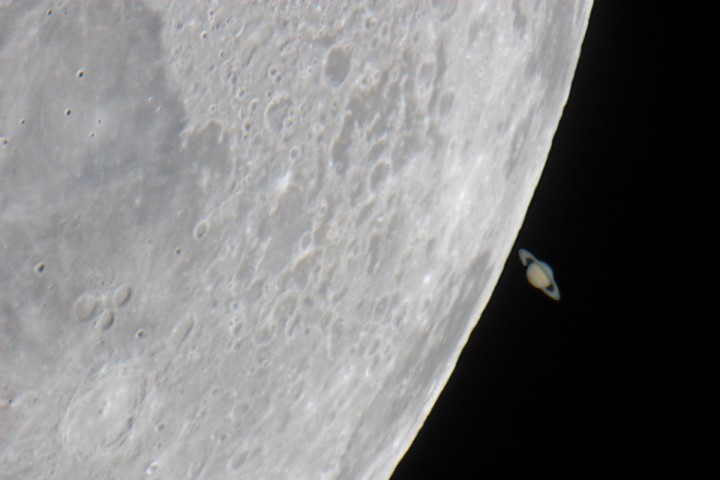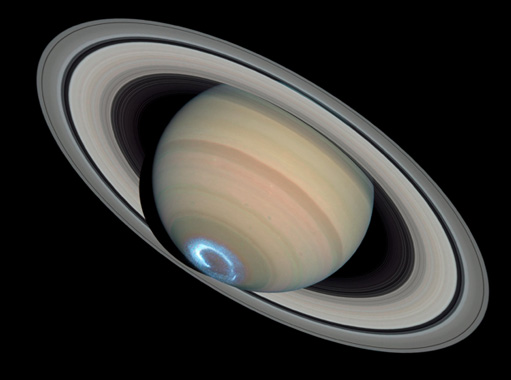Mars first. It's visible basically all night right now, and you can find it with a sky map. Perhaps the easiest thing to do is look outside at midnight, when Mars will be pretty much due south. Mars will be conspicuous as one of the brightest 'stars' in the south, with a distinctive reddish color - Mars is named for the Roman god of war. The red color is due to a dusty surface, and though Mars is dry and cold today, large amounts of liquid water may have once existed on its surface. It has weather, too - this picture of 'tornadoes on Mars' recently made the rounds on the internet:

Huge source.
That was taken by the University of Arizona's HiRISE imager in orbit over Mars. It produces some really incredible images, like this impact crater:

Source.
Huge source.
Or this one:

Source.
Huge source.
Or these sand dunes:

Source.
Huge source.
Hint: The images above have been massively downsized to display properly here, HiRISE is a very high resolution imager, click the 'source' link below any of the above pictures for a big version, or the 'huge source' for a ridiculously large version you can zoom in on. It's worth it.
HiRISE has an image gallery of over 21,000 images like these, you can find it here. If you have your red-cyan 3D glasses*, you can find 3D images of Mars from orbit (HiRISE) here, and from the ground (Spirit and Opportunity rovers) here and here.
*You don't have red-cyan glasses? I told you, they're free.
On to Saturn:

Source.
You can find Saturn just east of Mars, right next to the bright star Spica. Here's a screenshot from Stellarium (you should download Stellarium if you like astronomy, it's free) to show how to find Saturn. Click for bigger:

Saturn's most obvious feature is those lovely rings, made primarily of dust. If you have a very nice pair of binoculars (you need about 25x magnification) and good eyes, you may be able to make them out, but most likely you'll need a small telescope. The good news is it doesn't need to be anything fancy, just about any small telescope will do. It's one of the most surreal things you can see in the night sky. I highly recommend it, A++, would look at again.

Source.
That's the Moon in the foreground with Saturn peeking out behind. That's about what you can expect Saturn to look like through a typical consumer telescope. If you were in a space ship, you could get a much closer view, like this one from Cassini:

Source.
Taken with the Sun hidden behind Saturn, so the planet is seen in silhouette and the rings are lit up by the sunlight passing through. Notice the bright dot just above and to the left of the bright inner rings - that's Earth.
And because we're all about auroras here, this is a shot of an aurora on Saturn:

Source.
And that wraps up the tour of the naked eye worlds. Except... don't forget the Moon! It's so obvious it's easy to take for granted, but even with a basic pair of binoculars, it's really something else:

Huge source.
Same deal as above, click the 'huge source' button and zoom in.
No comments:
Post a Comment